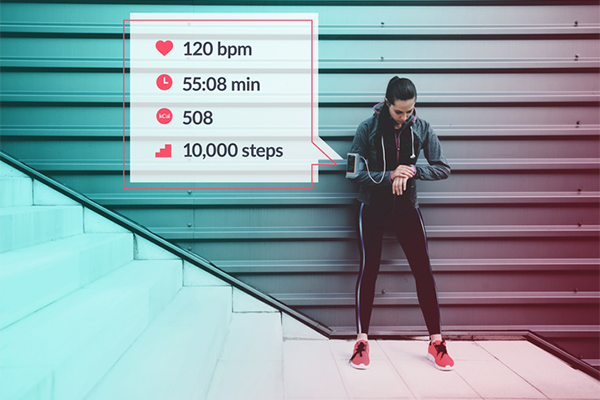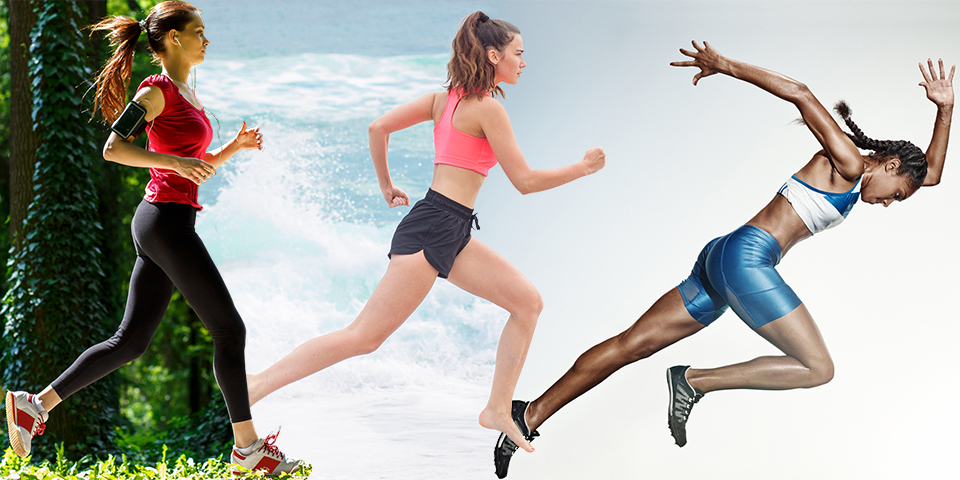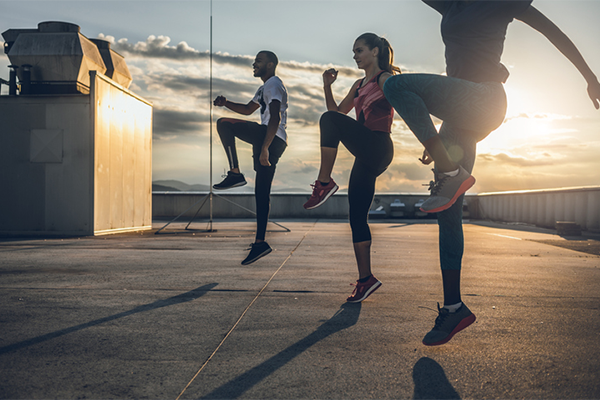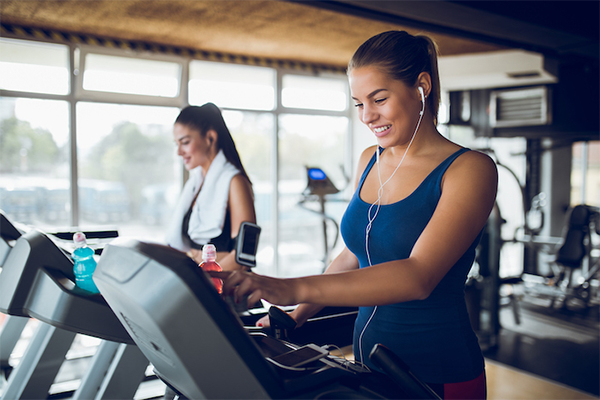11 Powerful Reasons Why You Should Be Running

On the definitive list of amazing exercise activities, running ranks pretty highly — the practical benefits include convenience and affordability, but from a health standpoint, it’s an effective way to keep both your body and brain in great shape.
“Running is one of the simplest cardiovascular activities you can do, with benefits for nearly every part of your body,” says Meghan Kennihan, NASM-CPT, a Road Runners Club of America and USA Triathlon run coach.
11 Incredible Benefits of Running
From head to toe, mood to muscles, here’s why so many people extol the virtues of running.
1. It’s convenient
Unlike hitting the gym or playing a round of tennis, running is something you can do anytime, anywhere.
“You can literally go right outside your door and start,” says Amanda Shannon Verrengia, ACE-certified personal trainer and USA Track and Field and RRCA coach.
Just lace up your running shoes and you’re ready to pound the pavement — or the treadmill, the track, the park, or the trail behind your house. The options are endless.
And you don’t have to carve out precious alone time to run, either. As Verrengia notes, you can bring your dog with you, or head out with a friend or significant other.
2. It’s cheap
In the age of pricey gym memberships and boutique workout studios that charge upwards of $30 a class, running can actually help you save cash. It’s free to do, and requires minimal gear.
“All you need is a good pair of running shoes [and some workout clothes],” says Kennihan.
3. It can improve cardiovascular health

The body is amazingly adaptable, and when faced with repeated bouts of challenging aerobic (oxygen requiring) exercise, it upgrades the functioning of its entire cardiorespiratory system to better handle that exercise.
“You’re lungs, heart, and vascular system will all become more effective and efficient at delivering oxygen throughout your body, especially to working muscles,” says Trevor Thieme, C.S.C.S. “And the more efficient they become, the healthier you’ll be overall.”
4. It’s easy to learn
That doesn’t mean running is easy — it just means you don’t have to possess any special skills to do it.
As Kennihan notes, chances are good you already learned to run when you were a toddler, so now you just need to familiarize yourself with proper form.
5. It can help you lose weight
Running can be a major boon to your weight-loss goals. “The precise number of calories you burn while running depends on such things as height, weight, age, gender, fitness level, exercise intensity, and running experience,” says Thieme.
“But moving your body at a challenging pace will almost certainly have a positive effect on your body composition — especially when you’re just starting out,” he adds.
Thieme notes that as you become fitter, you’ll likely have to increase the intensity of your workouts to continue to shed fat. “If you keep doing the same thing, you’ll eventually stop adapting to it,” says Thieme.
“Switch things up with intervals, tempo training, and other higher intensity workouts to keep torching calories and dropping pounds.”
6. It provides a natural “high”

Runner’s high — the feeling of euphoria you get during or following a run — is real.
“Running boosts the brain’s serotonin levels, dopamine levels, and endorphins,” says Kennihan.
That quick injection of joy and energy is awesome in and of itself, but the added benefit is that helps keep you motivated to tackle your next workout.
7. It works your legs and core
If you’ve ever watched a marathon or track and field event, you know the positive effect running can have on the lower body. But few people realize just how beneficial it can be for the core.
“Running automatically engages your core muscles and forces you to stabilize your hips,” says Kennihan.
A strong core can help with balance, stability, and stamina in everyday activities, she adds, like walking, playing sports, carrying groceries, and even maintaining good posture as you work at your desk.
8. It can strengthen your bones
“Running is a weight-bearing exercise that stresses the bones just enough to help build more density,” Kennihan says.
A study published in the Journal of Strength and Conditioning Research found that running not only has a greater effect on bone density than non-weight-bearing activities like cycling, but that it also has a greater effect on bone density than other weight-bearing activities like resistance training.
That doesn’t mean you should ditch strength training in your quest for more robust bones — the difference between strength training and running was statistically significant but functionally negligible in that respect.
Plus, when combined with running, the two activities offer a killer one-two punch to help build stronger bones, Kennihan adds.
9. It can improve your athleticism

Running is an essential component of many sports, from football to cricket. It’s no surprise, then, that regular running workouts, which help improve your stamina, speed, and cardiovascular endurance, can make you a stronger, more adaptable athlete.
10. It can improve your mental well-being
Running isn’t just good for your body — it can work wonders for your mental and emotional health, too.
A study from the Archives of Physical Medicine and Rehabilitation found that regular exercisers experienced an increase in vigor and a decrease in fatigue after 25 minutes on a treadmill, while non-exercisers showed no improvement in these areas after the same activity.
Research also suggests that regular aerobic activity like running can help keep your mind sharp as you age.
One study showed that endurance running in particular may help maintain cognitive function in elderly adults.
11. It offers constant variety.
From an outsider’s perspective, running might look boring, but that couldn’t be further from the truth.
“You can do so many different workouts with running,” says Kennihan. Speed work, fartleks, tempo runs, trail runs, treadmill workouts, and hill runs are just a few, she says.
And not only can you vary the pace and distance, you can also switch up the terrain and location to keep things interesting — you can run along the beach, challenge yourself to a mountain trail, or cruise around your neighborhood cul-de-sacs.
You can even use your runs as an excuse to explore a new area, like a park or waterfront trail.
The 3 Basic Types of Running

Of course, not all running is the same. There are three basic levels, each of which can provide unique benefits.
Jogging
Kennihan defines jogging as running at a gentle pace slower than 6 mph (10 kph).
“Typically, those [who] don’t enjoy running, or who aren’t going to be competing in any races, can get away with only jogging one to two times a week and still get health benefits,” she says.
For people with minimal running experience, jogging can be a great way to get started.
Running
When you increase your pace above 6 mph, you cross the threshold from jogging into what is technically running. And when you keep up that pace for more than five miles, you’re distance running.
Although popular with all age groups, distance running tends to become increasingly attractive to people as they age and begin to lose fast-twitch muscle fibers, Kennihan says.
“While we can’t run any faster [after a certain age],” she says, “we can still run longer and longer.”
Verrengia adds that distance running is also a great way to build up your cardiovascular health. The mental toughness you get as a result is just a bonus.
Sprinting
Jogging and distance running target your slow-twitch (type I) muscle fibers, which are engineered for endurance.
Alternately, sprinting targets the same fibers as weightlifting — your more powerful fast-twitch (type II) fibers — and when performed repeatedly in the context of a workout, is a form of high intensity interval training (HIIT).
“Speed work, or interval training, encompasses bursts of intense effort separated by recovery periods of slower running, jogging, or walking,” says Kennihan.
These types of workouts can help you increase your speed, running efficiency, and fatigue resistance, as well as your power and muscular endurance, she explains.
Speed work is also the most effective type of running workout for shedding fat. But because it’s so physically demanding, it should only be performed after you’ve already built a strong fitness foundation through jogging and running.
4 Ways to Take Care of Yourself While Running
As with any form of exercise, running has its risks.
Sprained ankles and pulled muscles can happen if you run on uneven terrain or skip your warm-up. But even more insidious are so-called overuse injuries — like shin splints, tendonitis, and even stress fractures.
1. Don’t forget to warm up — and cool down

You would never start a car in third gear, but that’s essentially what you’re asking your body to do if you start exercising without a proper warm-up.
Light jogging and dynamic stretching will help prime your muscles for action, boosting performance and reducing your risk of injury.
Cooling down in the same way as you warm up — and perhaps even throwing in some foam rolling — can have the same effect by getting your post-workout recovery off on the right foot.
2. Take it slow
Injuries also tend to occur when you try to increase your training load (e.g., mileage) too quickly. To avoid such injuries, Kennihan suggests you gradually build up your mileage by no more than 10 percent per week.
3. Make sure to vary your workouts

Verrengia adds that it’s also important to actively work on optimizing your running form, regularly mixing up your workouts (like incorporating more speed work, or adding hills into your routine), and including other forms of exercise — not just running — in your regime.
“Runners need to realize that strength work, stretching, muscle release work, foam rolling, [and the like] play an important role in how successfully and healthfully they’re able to run,” she explains.
4. Go on recovery runs
Making recovery a priority includes recovery runs, which are short, easy cardio sessions (usually 15-20 minutes long) meant to help reduce muscle soreness and fatigue.
Mellow workouts like this are important for all runners, novices and veterans alike, and are usually done the day after a more physically demanding run (like an interval session or race). “
You should be able to have full conversations with people on these runs, and not feel any burn in the legs,” says Kennihan.
If you’re a beginner, Kennihan says your recovery can take the form of foam rolling or yoga in lieu of adding mileage.
“For those with higher mileage bases, recovery runs are great for increasing your aerobic base without causing more stress,” she says.
